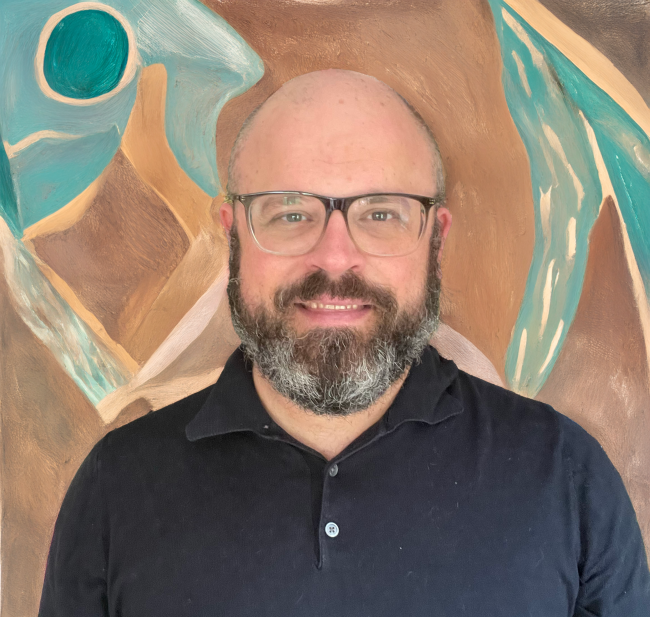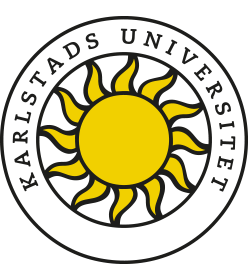Interview with Andreas Henriksson
Today we talk with Andreas Henriksson, who is the co-convenor of the Relationer och Vardagsinteraktion (REVA) research group at the Sociology Department here in Karlstad University. Andreas will talk about his work on intimacy and everyday life, including research into dancing and loneliness. So, let’s start with a brief introduction. If you could, tell us about your main research interests and your most recent work.

Andreas Henriksson: My main research interest is the sociology of intimacy, which I began understanding in my dissertation on singlehood (Henriksson, 2014). I defined intimacy not as a form of relationship but as the broader spectrum of interactions with people we encounter, a crucial aspect for singles. This concept of intimacy has remained central to my work, leading me to study diverse topics such as dancing, migrant bachelors, and loneliness—where I explore loneliness as a lack of intimacy. My current research focuses on how everyday interactions intersect with larger societal processes, using intimacy as a lens to understand personal and social dynamics, such as masculinity in migrant communities or family life in diasporic settings.
We completed a four-year study on single men with migrant backgrounds about a year ago, which involved Syrian and Polish men in Sweden and Bangladeshi and Romanian men in Italy. As part of the project, two co-written articles were recently published (Henriksson et al., 2023; Wojnicka et al., 2024). One explores the common bifurcation in singlehood between those who wait and those who date, while the other examines what happens to these men on the “dating market” as an outcome of, among other factors, racialization. Our findings challenge the assumption that singlehood is solely shaped by culture. Some would for example say that dating and being open to new relationships, rather than waiting for marriage, is possible mainly in the liberal west. Instead, factors like class, migration status, and community influence how singlehood and masculinity are experienced. For example, Bangladeshi men’s singlehood is often framed as a temporary, non-sexual phase due to strong family ties, while Syrian men’s experiences reflect a more individualistic orientation influenced by displacement and fractured family connections.
Anna Pechurina: That sounds very interesting! Your work seems interdisciplinary, covering singlehood, intimacy, migration, everyday life, and gender. How does the concept of intimacy help you to approach all of these topics?
Andreas Henriksson: I try to center a lot of what I do around the concept of intimacy. I approach that concept both empirically and conceptually. Empirically, I investigate intimate practices—how intimacy is done. Conceptually, I explore what intimacy means in specific contexts. The concept is broad and flexible enough to include diverse questions, such as how migrant groups or diasporas engage in intimacy, and how this differs from, say, Swedish singles. It’s a versatile framework that allows for rich, comparative analysis.
At the same time, intimacy is organised differently across contexts. For example, you can develop intimacy by getting to know someone—a cognitive process. But intimacy also exists in embodied interactions, such as dancing, where you experience closeness without necessarily forming a relationship. People themselves also reflect on intimacy conceptually, organizing their lives around it in various ways.
Anna Pechurina: Dancing seems like a fascinating example. It allows for transient intimacy, yet it can also lead to relationships. How do you differentiate these different types of intimacy?
Andreas Henriksson: The norms in dance venues often promote rotation to encourage fleeting interactions rather than exclusive pairings. However, regulars sometimes form close-knit communities that can be less welcoming to newcomers. Intimacy in these contexts is complex and multilayered. Transient intimacy is the norm, so forming a relationship may require stepping outside the community’s rules. People often navigate these social regulations carefully, balancing personal desires with community expectations.
Anna Pechurina: When I think about intimacy, I usually associate it with friendship and family relationships. The example with dancing offers a less conventional example. Are there other examples of non-conventional forms of intimacy you came across in your research?
Andreas Henriksson: Yes, definitely. One example is intimacy as seen in digital media, where people develop pseudo-corporeal interactions (e.g., ASMR videos). Even brief encounters, like passing someone on a narrow street and negotiating body space, involve forms of intimacy. Everyday interactions with neighbors, even if limited to a smile, also contribute to social intimacy. In the case of migrant bachelors, for example, much of their intimacy revolves around imagined interactions, such as contemplating how they would interact with Swedes. So, intimacy is often embodied but can also exist cognitively or emotionally.
But non-conventional intimacy can also be purely cognitive. Sharing secrets, for example, is a classical form of intimacy. The key is that at least one party feels they are sharing a unique, personal moment that is not shared with others. This can happen in physical or virtual spaces.
Anna Pechurina: At Karlstad Sociology, you are one of the leads in developing the department’s research profile on intimacy and health. Could you share more about this initiative?
Andreas Henriksson:This is our department’s second round of fostering interdisciplinary research. Previously, we focused on aging. This time, the theme is intimacy and health. The department includes gender studies, sociology, social work, and psychology, which is a broad and sometimes challenging mix. We’ve worked on building shared resources, such as a common survey on intimacy and a “Relationship lab” for studying human behavior in relationships. It’s a platform to support diverse research, though funding and coordination remain challenges.
Henriksson, A. (2014). Organising intimacy. Exploring heterosexual singledoms at Swedish singles activities.urn:nbn:se:kau:diva-33658
Henriksson, A., Mellström, U., Priori, A., & Wojnicka, K. (2023). Waiting or dating? Migrant bachelors in the European borderscapes. Norma: International Journal for Masculinity Studies.https://doi.org/10.1080/18902138.2023.2251351
Wojnicka, K., Priori, A., Mellström, U., & Henriksson, A. (2024). He leads a lonely life: Single men’s narratives of dating and relationships in the context of transnational migration. Journal of Ethnic and Migration Studies.https://doi.org/10.1080/1369183X.2024.2393673

